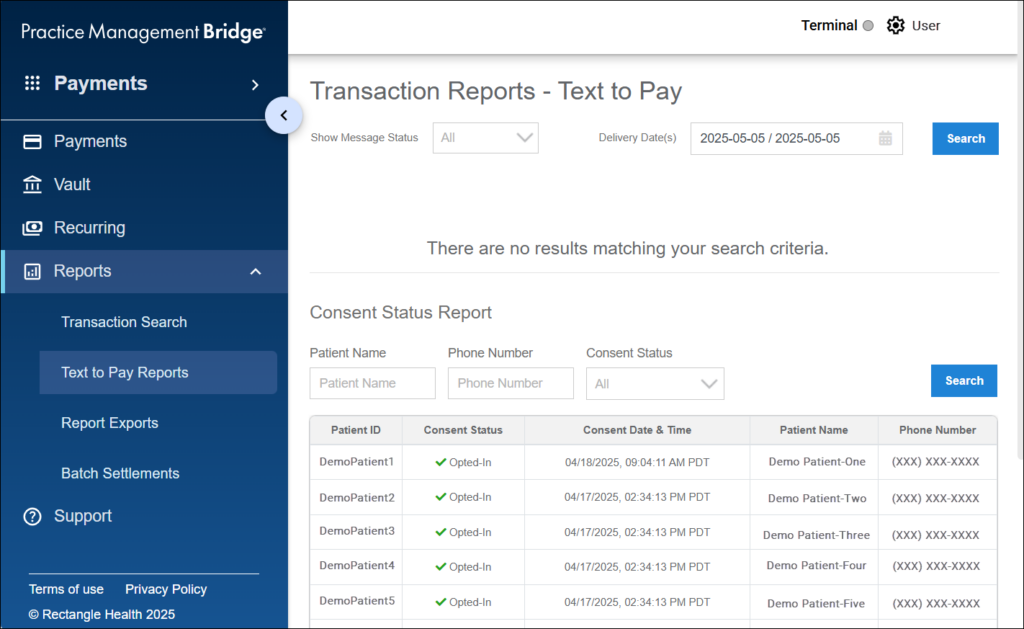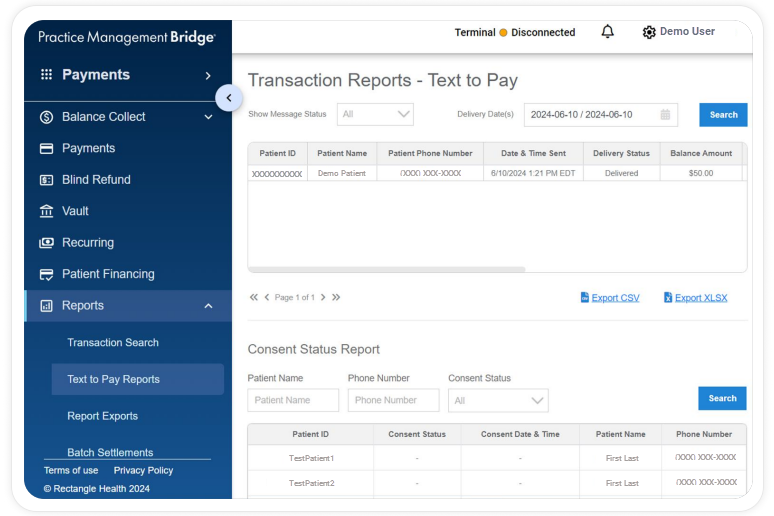The Vault feature enables you to securely store a patient’s encrypted credit card information for future payments, also known as Card on File.
Storing a Card on File in Vault is a familiar concept for most patients—they already do this when booking a hotel, ordering an Uber, or subscribing to services like Amazon or Netflix. Offering to store a Card on File in Vault at your practice, or even making it a standard policy, provides the same convenience but with enhanced protections like HIPAA compliance.
About Pre-Authorized Healthcare Payment Forms
When you store a patient’s card on file for recurring or future charges, the Pre-Authorized Healthcare Form (PAHCF) in Bridge Payments is used to capture the patient’s consent and may help protect against chargebacks. These forms capture information electronically and are kept on file for future reference.
Vault Use Cases
Your practice can utilize the Card on File in Vault feature for a wide range of transactions such as:
- Office visits
- Instantly charge patients for office visits and/or co-pays without having to physically swipe the patient’s credit card every time.
- No shows or cancellations
- Collect fees automatically for missed appointments or late cancellations, depending on your policies.
- Recurring payments
- Process fixed payment amounts, agreed upon with the patient.
- Repeat treatments
- Easily charge cards on file for fees associated with ongoing services or treatments.
Vault Benefits
Practice Benefits
- Improved cash flow
- Storing a Card on File in Vault means you can implement faster billing and collection processes, especially for recurring payments from repeat treatments.
- Better patient experience
- Patients want convenience. Build loyalty with a fast, easy, and secure way for patients to pay.
- Secured storage
- Card on file storage is encrypted, HIPAA-compliant, and helps protect patient data.
- Reduced staffing strain
- Automatic billing reduces the administrative burden associated with manual payment processing, paper invoicing, and chasing outstanding balances.
Patient Benefits
- Convenient
- Securely store payment information for future visits or recurring payments.
- Avoided late fees
- Prevent outstanding balances by ensuring payments are processed on time.
- Fast
- Reduce wait times so check outs can happen in seconds.
- Secure
- Payment information is protected by advanced encryption where not even the practice can view stored card information.

